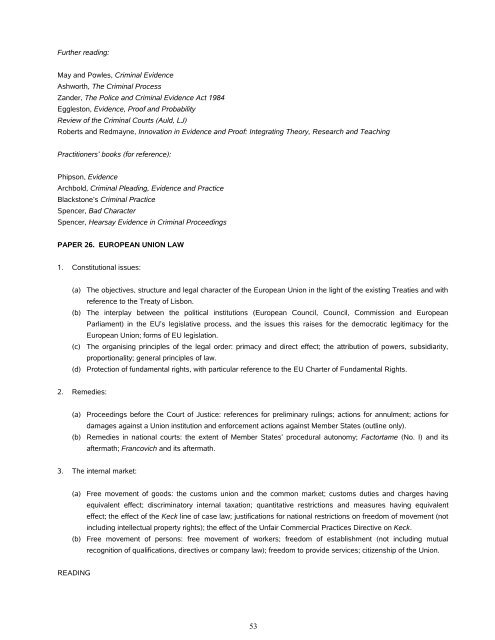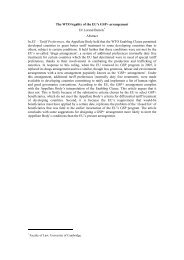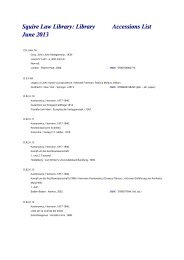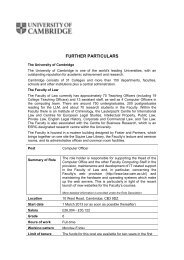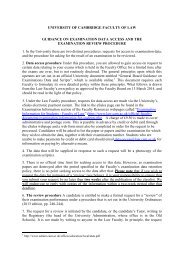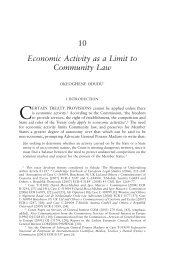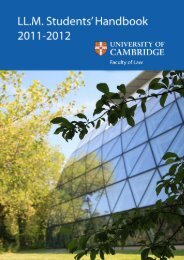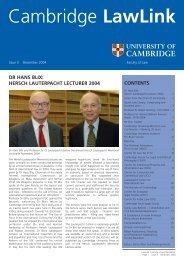Contents - Faculty of Law - University of Cambridge
Contents - Faculty of Law - University of Cambridge
Contents - Faculty of Law - University of Cambridge
Create successful ePaper yourself
Turn your PDF publications into a flip-book with our unique Google optimized e-Paper software.
Further reading:May and Powles, Criminal EvidenceAshworth, The Criminal ProcessZander, The Police and Criminal Evidence Act 1984Eggleston, Evidence, Pro<strong>of</strong> and ProbabilityReview <strong>of</strong> the Criminal Courts (Auld, LJ)Roberts and Redmayne, Innovation in Evidence and Pro<strong>of</strong>: Integrating Theory, Research and TeachingPractitioners’ books (for reference):Phipson, EvidenceArchbold, Criminal Pleading, Evidence and PracticeBlackstone’s Criminal PracticeSpencer, Bad CharacterSpencer, Hearsay Evidence in Criminal ProceedingsPAPER 26. EUROPEAN UNION LAW1. Constitutional issues:(a)(b)(c)(d)The objectives, structure and legal character <strong>of</strong> the European Union in the light <strong>of</strong> the existing Treaties and withreference to the Treaty <strong>of</strong> Lisbon.The interplay between the political institutions (European Council, Council, Commission and EuropeanParliament) in the EU’s legislative process, and the issues this raises for the democratic legitimacy for theEuropean Union; forms <strong>of</strong> EU legislation.The organising principles <strong>of</strong> the legal order: primacy and direct effect; the attribution <strong>of</strong> powers, subsidiarity,proportionality; general principles <strong>of</strong> law.Protection <strong>of</strong> fundamental rights, with particular reference to the EU Charter <strong>of</strong> Fundamental Rights.2. Remedies:(a)(b)Proceedings before the Court <strong>of</strong> Justice: references for preliminary rulings; actions for annulment; actions fordamages against a Union institution and enforcement actions against Member States (outline only).Remedies in national courts: the extent <strong>of</strong> Member States’ procedural autonomy; Factortame (No. I) and itsaftermath; Francovich and its aftermath.3. The internal market:(a)(b)Free movement <strong>of</strong> goods: the customs union and the common market; customs duties and charges havingequivalent effect; discriminatory internal taxation; quantitative restrictions and measures having equivalenteffect; the effect <strong>of</strong> the Keck line <strong>of</strong> case law; justifications for national restrictions on freedom <strong>of</strong> movement (notincluding intellectual property rights); the effect <strong>of</strong> the Unfair Commercial Practices Directive on Keck.Free movement <strong>of</strong> persons: free movement <strong>of</strong> workers; freedom <strong>of</strong> establishment (not including mutualrecognition <strong>of</strong> qualifications, directives or company law); freedom to provide services; citizenship <strong>of</strong> the Union.READING53


